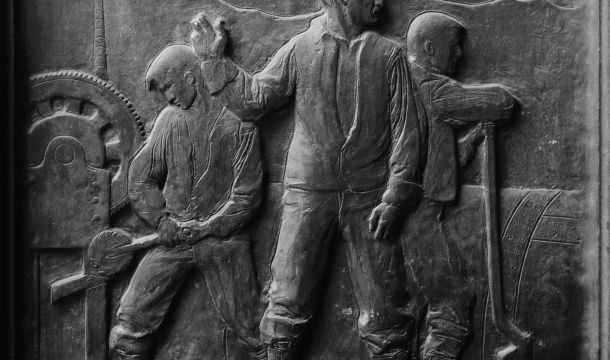DOL Proposes New Independent Contractor Rule Limiting Contractor Status and Rescinding Trump Rule
In January 2021, the Department of Labor (DOL) during the Trump Administration published a rule titled "Independent Contractor Status Under the Fair Labor Standards Act" (IC Rule) providing guidance on the classification of independent contractors in any industry. In 2021, the IC Rule identified five economic reality factors to guide the inquiry. Two of the five identified factors - nature and degree of control over the work and the worker's opportunity for profit or loss - were designated as "core factors" that are the most probative and carry greater weight in the analysis. The 2021 IC Rule stated that if these two core factors point towards the same classification, there is a substantial likelihood that it is the worker's accurate classification. The 2021 IC Rule also identified three less probative non-core factors: the amount of skill required for the work, the degree of permanence of the working relationship between the worker and the employer, and whether the work is part of an integrated unit of production. The effective date of the 2021 IC Rule was March 8, 2021.
The current administration's DOL now believes that the 2021 IC Rule does not fully comport with the FLSA's text and purpose. Therefore, the DOL believes it is appropriate to rescind the 2021 IC Rule and set forth an analysis for determining an independent contractor status that is more consistent with the existing judicial precedent and the DOL's long-standing guidance prior to the 2021 IC Rule.
The new rule states that: "A determination of whether workers are employees or independent contractors under the Act focuses on the economic realities of the workers' relationship with the employer and whether the workers are either economically dependent on the employer for work or in business for themselves." Section 795.105(a). The new economic reality test to determine economic dependence is listed in Section 795.110:
(a) Economic Reality Test
- In order to determine economic dependence, multiple factors assessing the economic realities of the working relationship are used. These factors are tools or guides to conduct a totality-of-the-circumstances analysis.
- The six factors described in paragraphs (b)(1) through (6) of this section should guide an assessment of the economic realities of the working relationship and the question of economic dependence.
(b) Economic Reality Factors:
- Opportunity for profit or loss depending on managerial skill. This factor considers whether the worker exercises managerial skill that affects the worker's economic success or failure in performing the work. The following facts, among others, can be relevant: whether the worker determines or can meaningfully negotiate the charge or pay for the work provided; whether the worker accepts or declines jobs or chooses the order and/or time in which the jobs are performed; whether the worker engages in marketing, advertising, or other efforts to expand their business to secure more work; and whether the worker makes decisions to hire others, purchase materials and equipment, and/or rent space. If a worker has no opportunity for a profit or loss, then this factor suggests that the worker is an employee.
- Investments by the worker and the employer. This factor considers whether any investments by a worker are capital or entrepreneurial in nature. Costs borne by a worker to perform their job (e.g., tools and equipment to perform specific jobs and the workers' labor) are not evidence of capital or entrepreneurial investment.
- Degree of permanence of the work relationship. This factor weighs in favor of the worker being an employee when the work relationship is indefinite in duration or continuous, which is often the case in exclusive working relationships.
- Nature and degree of control. This factor considers the employer's control, including reserved control, over the performance of the work and the economic aspects of the working relationship. Facts relevant to the employer's control over the worker include whether the employer sets the worker's schedule, supervises the performance of the work, or explicitly limits the worker's ability to work for others. Additionally, facts relevant to the employer's control over the worker include whether the employer uses technological means of supervision (such as by means of a device or electronically), reserves the right to supervise or discipline workers, or places demands on workers' time that do not allow them to work for others or work when they choose. Whether the employer controls economic aspects of the working relationship should also be considered, including control over prices or rates for services and the marketing of the services or products provided by the worker. More indicia of control by the employer favors employee status; more indicia of control by the worker favors independent contractor status.
- Extent to which the work performed in an integral part of the employer's business. This factor weighs in favor of the worker being an employee when the work they perform is critical, necessary, or central to the employer's principal business.
- Skill and initiative. This factor considers whether the worker uses specialized skills to perform the work and whether those skills contribute to business-like initiative.
Editor's Note - The current Trump-era independent contractor rule remains in effect at the current time, at least until the new proposed rule is implemented. The new rule broadens employee coverage status and lessens the ability of the employer to consider workers as independent contractors. Publication of the proposed rule in the Federal Register starts the comment period that remains open for 45 days and closes on November 27, 2022. Written submissions may be submitted, identified by Regulation Identifier Number (RIN) 1235-AA43 and mailed to the Division of Regulations, Legislation, and Interpretation, Wage and Hour Division, U.S. Department of Labor, Room S-3502, 200 Constitution Avenue, N.W., Washington, D.C. 20210.
This article is part of our November 2022 Newsletter.
View newsletter online
Download the newsletter as a PDF
Related Content
Get Email Updates

NLRB to Seek Rescission of past Discipline Imposed under Overbroad Employer Work Rules

Do Drive Cam Cameras inside Trucks Violate Employee Rights?

Amazon Considers Risk When Investigating Employee Misconduct

Latest NLRB Attack Goes beyond Non-Compete Agreements to Reach Outside Employment

NLRB Board Addresses BLM Insignia at Work




